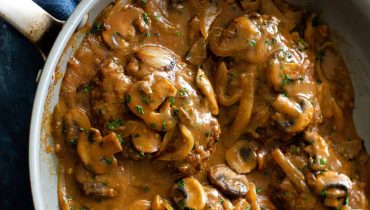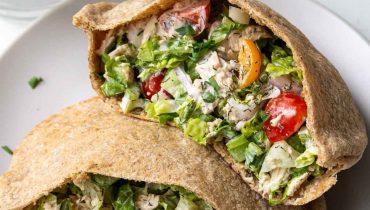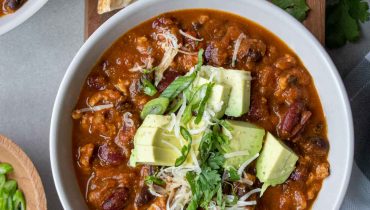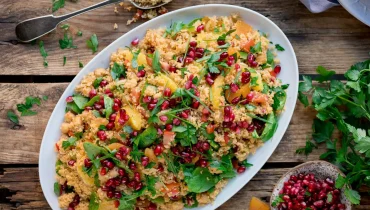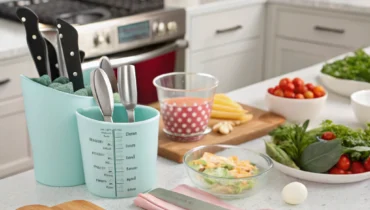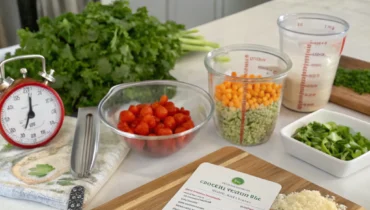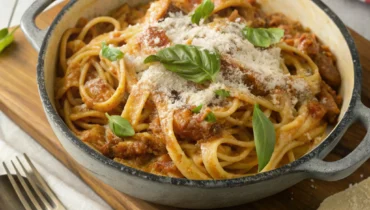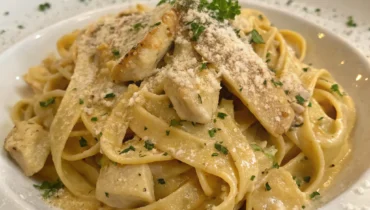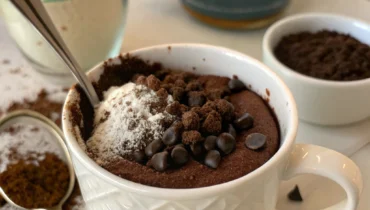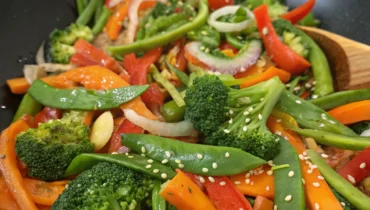Butternut Squash Mac and Cheese
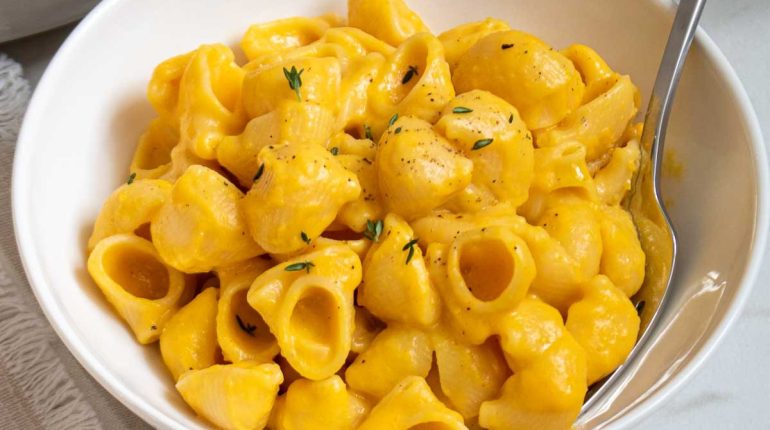
Posted October 13, 2023 by: Admin
This delightful one-pot butternut squash mac and cheese recipe is not only incredibly easy to prepare but also promises a mouthwatering experience for your taste buds. It’s a creative and healthy way to incorporate more vegetables into your diet. Whether you serve it as the main course or a side dish, this scrumptious dish is destined to become a family favorite, making its way into your roster of wholesome comfort food recipes.
What You’ll Need
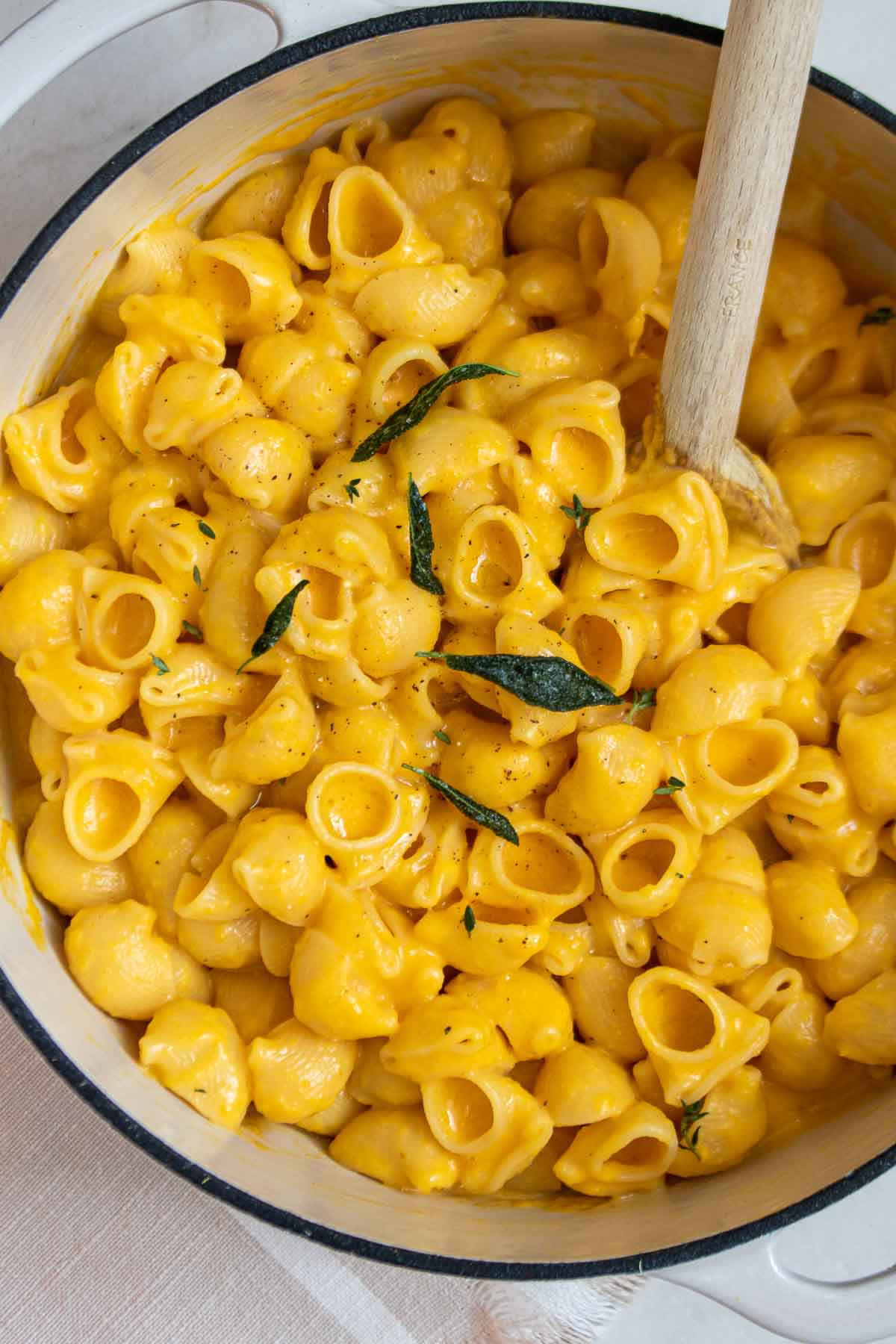
To whip up this fiber-packed mac and cheese, you’ll require the following ingredients:
- Butternut Squash: You can opt for a whole butternut squash and peel and dice it yourself, purchase pre-cubed squash, or use frozen butternut squash (refer to the note below).
- Short-Cut Pasta: Feel free to choose your preferred variety of short-cut pasta, such as gomiti, elbow macaroni, cavatappi, conchiglie, penne, or fusilli. In this recipe, I’ve used pipe rigate, also known as small snail pasta.
- Cheese: For the best texture and flavor, I recommend a combination of sharp cheddar cheese and gruyere. If you can’t find gruyere cheese, simply substitute it with additional cheddar, ensuring you use high-quality cheese, as it takes the spotlight in this mac and cheese.
- Butter: It adds creaminess and is used to fry the sage.
- Milk: Whole milk or 2% milk works best for creating the cheese sauce.
- Onion Powder: Enhances the flavor profile.
- Garlic Powder: Adds an extra layer of flavor.
- Salt: Essential for seasoning.
- Fresh Sage: While optional, fresh sage elevates the flavors and makes for a fantastic garnish.
As an optional flavor enhancer, you can also include a pinch of smoked paprika.
Dietary Adaptions
For a gluten-free version, replace the wheat-based pasta with gluten-free short-cut pasta.
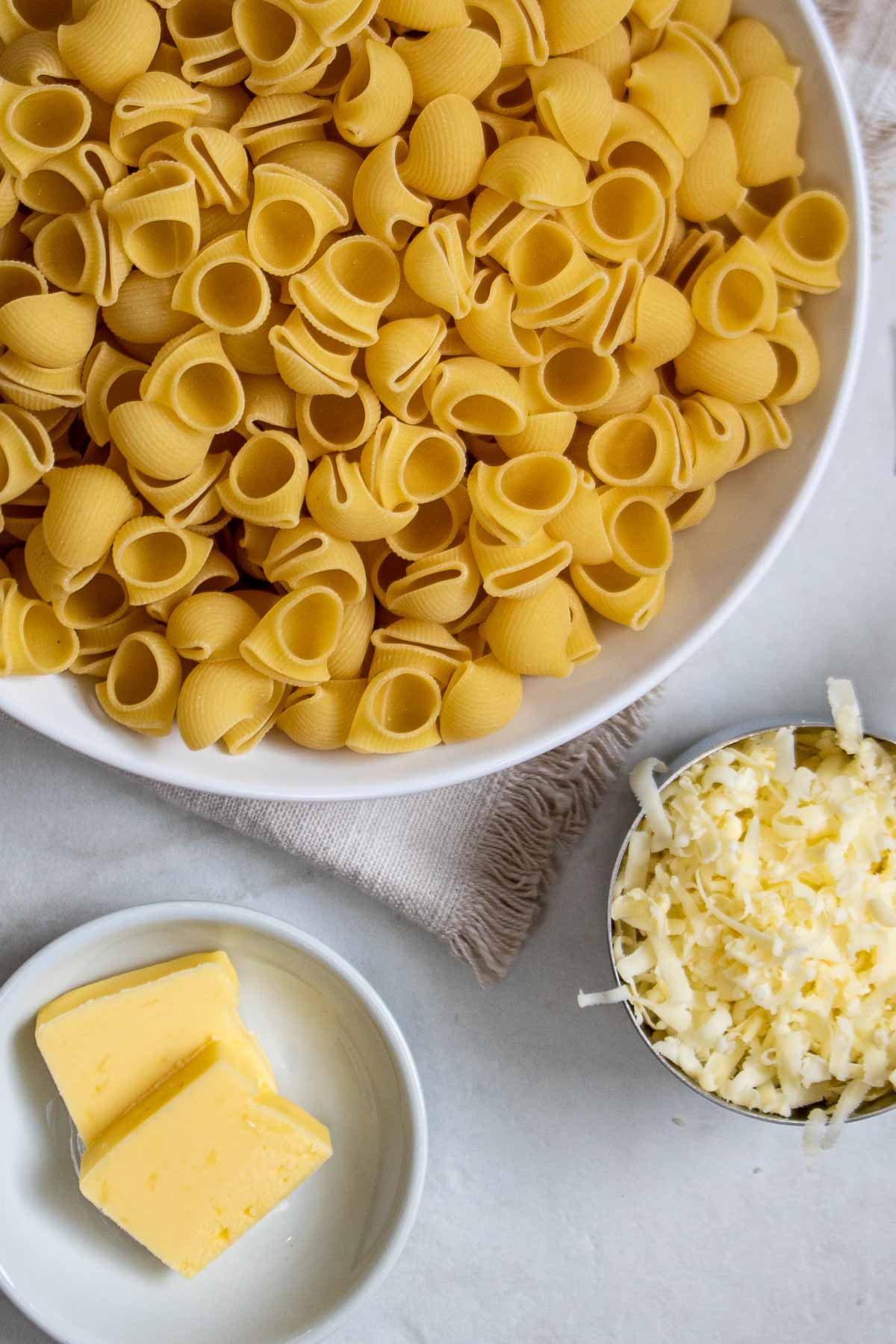
How to Make Butternut Squash Mac and Cheese
Once you’ve gathered your ingredients, follow these steps:
- Roast the squash. Roasting the squash enhances its flavor. (If you prefer a shortcut, you can use canned squash puree.)
- Puree the squash. Blend the squash into a creamy puree.
- Boil the pasta. Cook the pasta to your desired level of doneness; al dente works best in my opinion.
- Fry the sage (optional). While this step is not obligatory, it significantly enhances the dish’s flavors.
- Make the sauce. Combine butter, spices, squash, milk, and cheese to create the quintessential butternut squash cheese sauce.
- Mix the pasta and sauce. Once the sauce is ready, gently fold in the pasta until it’s thoroughly combined, resulting in a smooth and creamy texture.
And there you have it! If you fancy breadcrumbs on your mac and cheese (although it’s not my preference), simply transfer the finished dish to a large baking dish, sprinkle breadcrumbs on top, and bake in the oven at 350°F for 10-15 minutes until it turns golden and crispy.
Troubleshooting for Cheese Sauce:
- If your cheese sauce is too thick, you can thin it out with a bit of additional milk.
- If your cheese sauce is too thin, you can thicken it by adding a sprinkle of all-purpose flour.
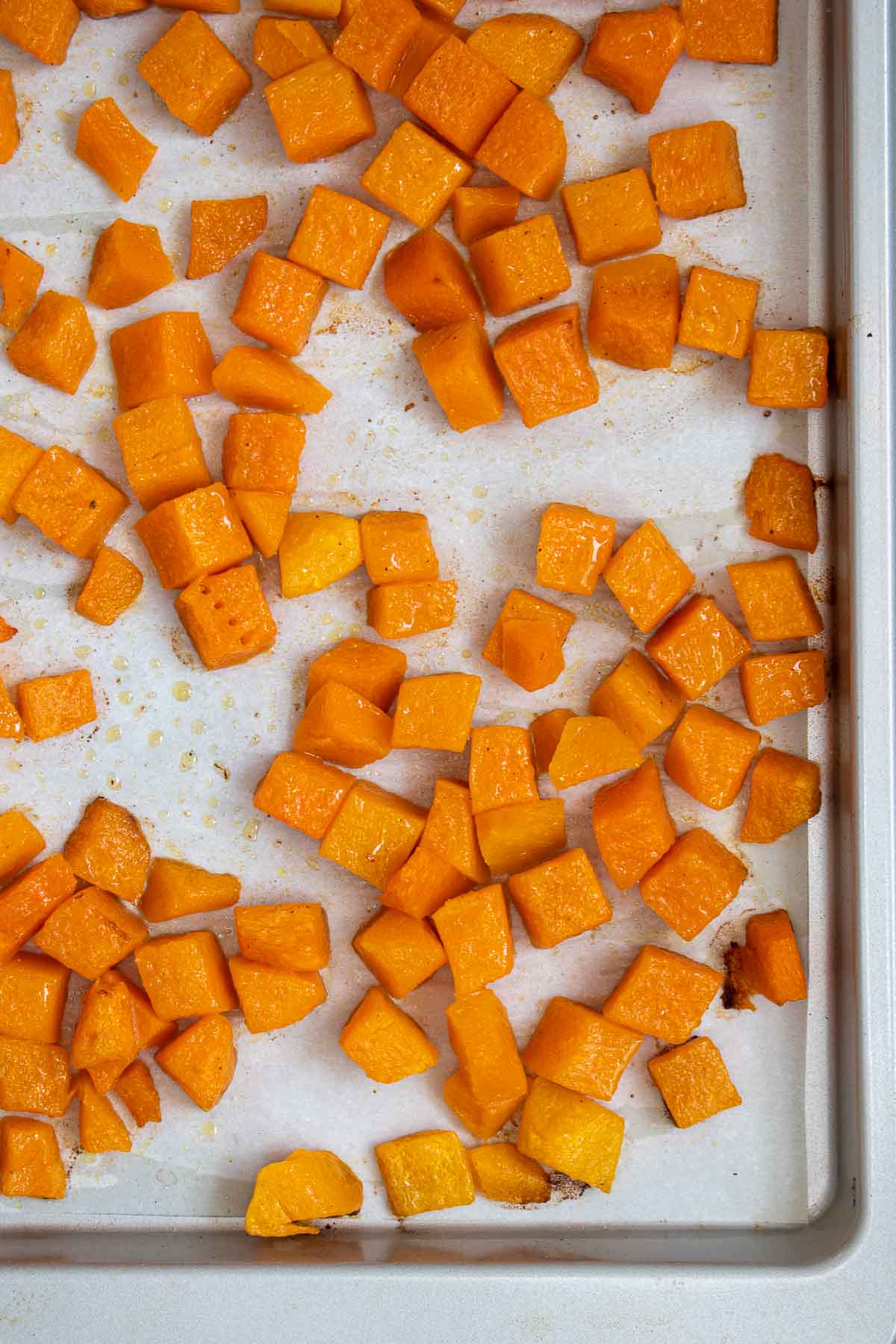
Nutrition Tip
If you’ve ever thought pasta is an unhealthy choice, think again! Pasta has been a staple across cultures for millennia, offering complex carbohydrates and fiber that can be part of a well-rounded diet alongside proteins, fats, and other essential nutrients.
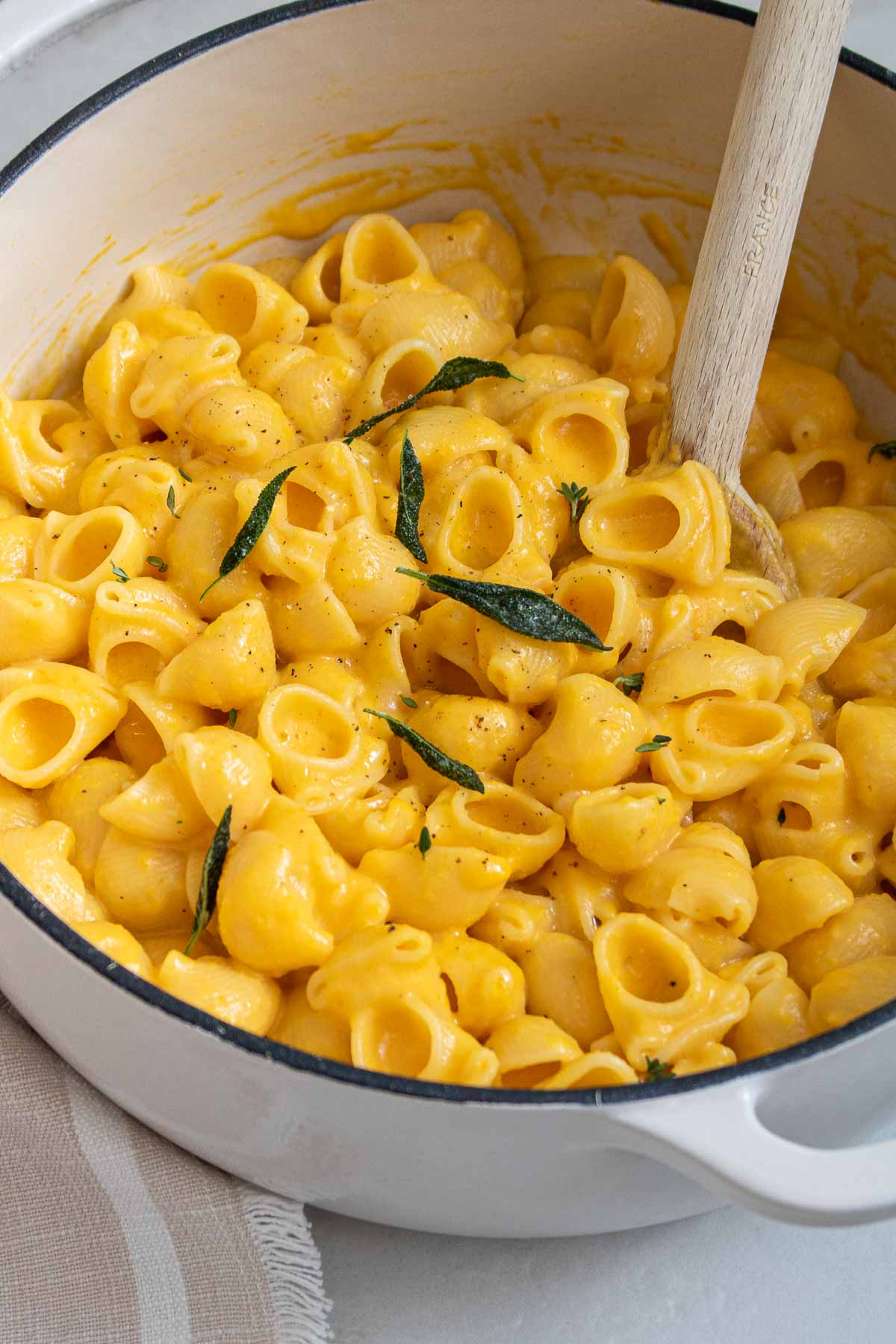
What Does Butternut Squash Mac n Cheese Taste Like?
Mac and cheese with butternut squash has a flavor profile very close to traditional mac and cheese but with a slightly sweeter and nuttier undertone. While the taste may differ slightly, the texture remains essentially the same.
Is It Better to Boil or Roast Butternut Squash for Mac and Cheese?
Many squash mac and cheese recipes call for boiling the squash to make the sauce, but roasting it imparts significantly more flavor. Although boiling is quicker, you sacrifice some flavor, texture, and nutritional value. The extra time and effort required to roast the squash are well worth the superior flavor it brings to the dish.
Can I Use Frozen Butternut Squash?
Yes, you can use frozen butternut squash. Simply add the frozen squash to the baking sheet and cook it according to the directions. You may need to extend the cooking time by about 5 minutes or until the squash is fully cooked; use a fork to check for doneness and adjust the cooking time as necessary.
Can I Use Another Type of Squash?
Absolutely, you can substitute butternut squash with other hard winter squashes such as buttercup, acorn, or hubbard squash. However, avoid using spaghetti squash, as its texture differs from the others.
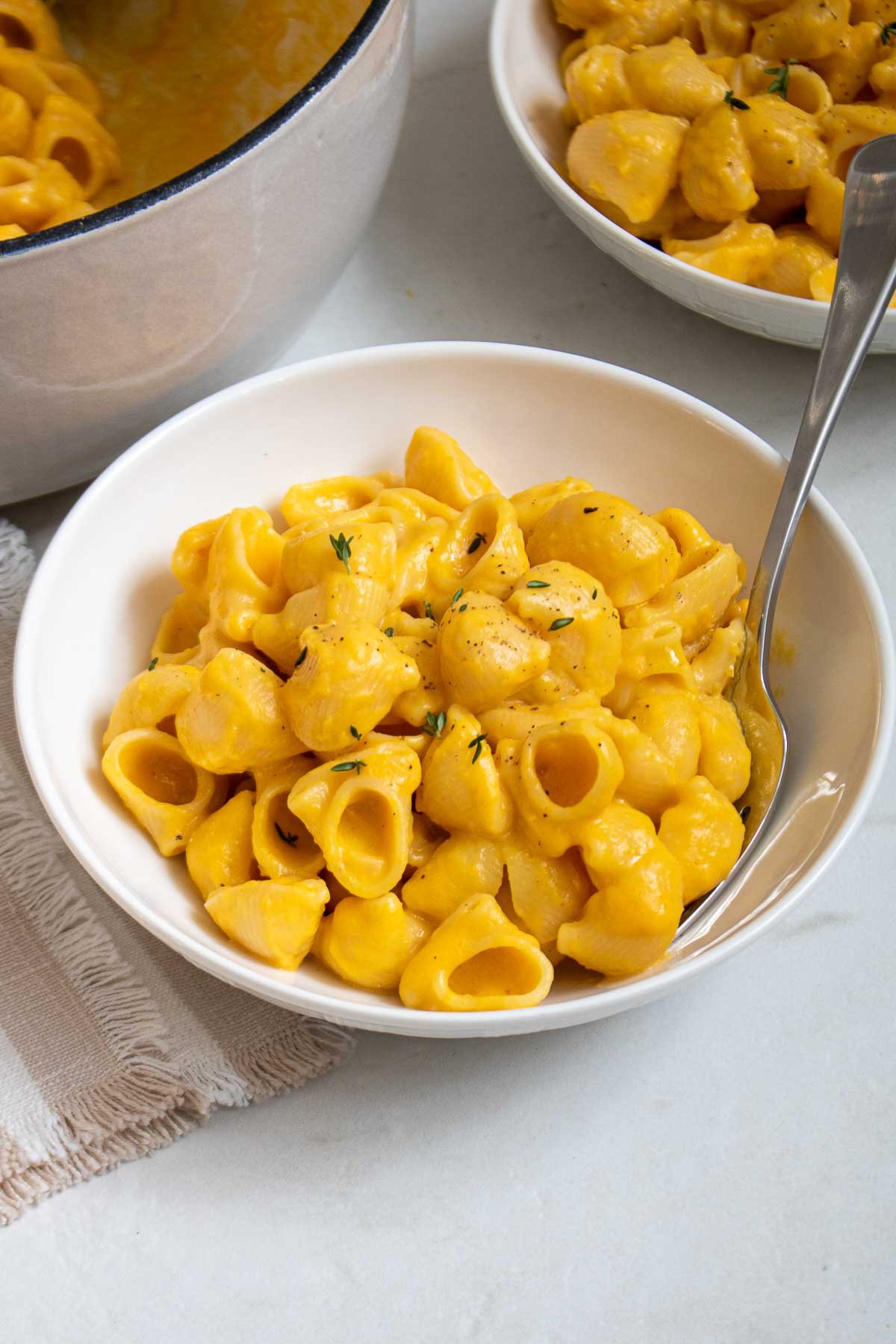
What to Serve with Squash Mac and Cheese
This mac and cheese is rich in carbohydrates and fat, with a good amount of fiber. To create a more balanced meal, consider pairing it with protein and additional vegetables:
To add protein: Serve it alongside roasted, grilled, or baked chicken, sausages, or steak.
To add vegetables: Accompany it with steamed or roasted broccoli, asparagus, green peas, spinach, or even integrate them directly into the dish.
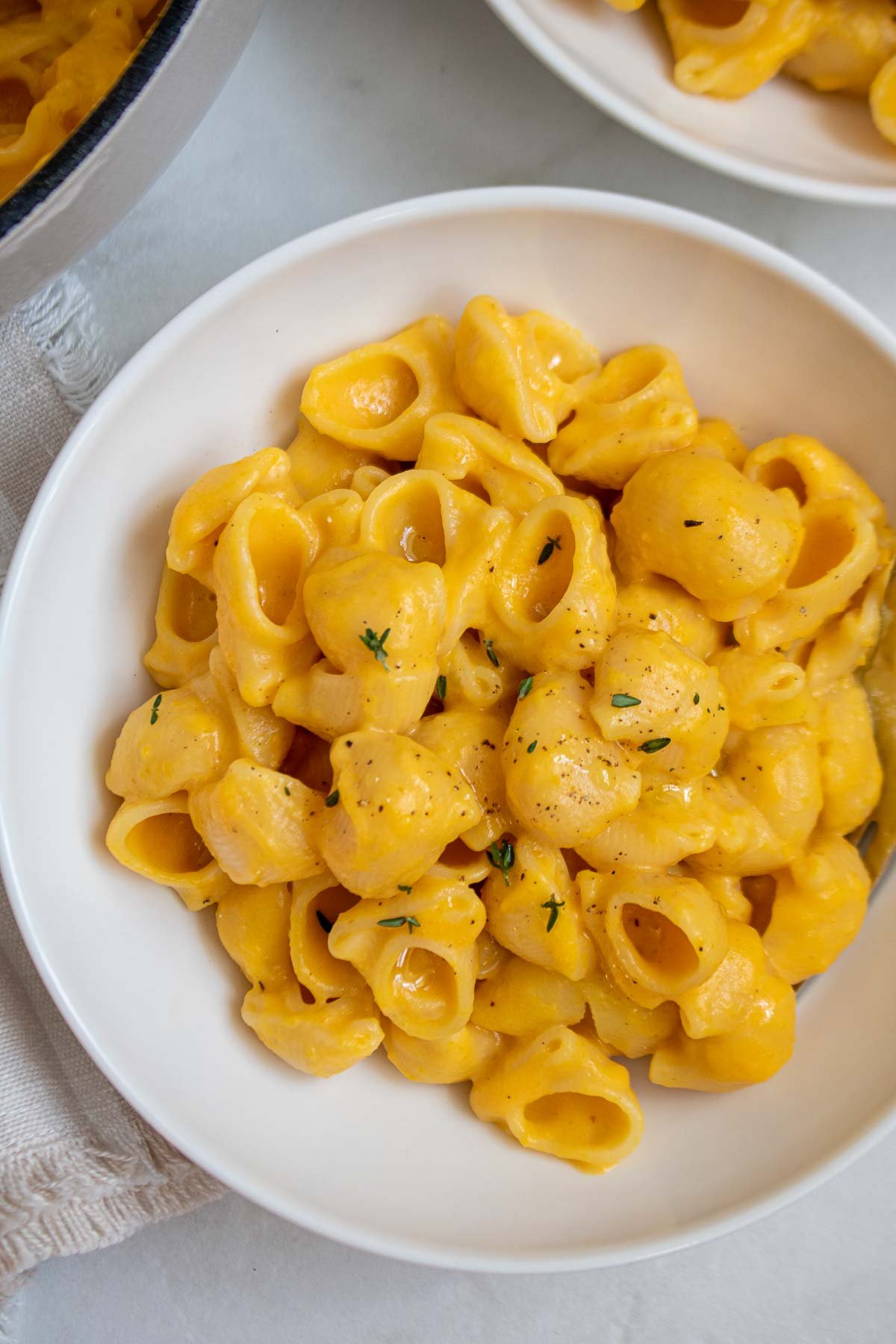
Storage + Reheating
To Store: Allow the mac and cheese to cool completely, then transfer it to airtight containers and store in the fridge for up to 3 days.
To Freeze: Once it’s cooled, transfer it to an airtight container and store it in the freezer for up to 3 months.
To Reheat: For best results, reheat the squash mac and cheese in a pan or pot over low heat. Simply add the leftovers to the pot with a splash of water or milk and warm it, stirring consistently and adding more milk or water as needed until the sauce regains its smooth and creamy consistency. Alternatively, you can reheat it in the microwave in a microwave-safe container for 1-2 minutes. If it’s frozen, be sure to thaw it before reheating.
Butternut Squash Mac and Cheese
This butternut squash mac and cheese, ready in under an hour, offers a healthy and comforting meal that the entire family will relish. Additionally, it keeps well in the fridge and freezer, making it a fantastic option for leftovers.
Ingredients
- 1 pound cubed butternut squash (about 5 cups)
- 1 pound short-cut pasta, such as elbows, penne, or shells
- 1 tablespoon olive oil
- 2 tablespoons butter
- 1 teaspoon onion powder
- 1 teaspoon garlic powder
- 1 pinch smoked paprika (optional)
- 1 cup milk, 2% or whole, plus more as needed
- 4 ounces sharp cheddar cheese, grated (about 1 1/2 cups)
- 4 ounces Gruyère cheese, grated (about 1 1/2 cups)
- 8 fresh sage leaves (optional)
- Salt
- Black pepper
Instructions
- Preheat the oven to 400°F.
- Place the cubed butternut squash on a baking sheet lined with parchment paper, drizzle with olive oil, and season generously with salt and pepper. Toss the butternut squash on the baking sheet, using your hands, until well coated, and then transfer to the oven to bake for 30 minutes or until tender and easily pierced with a fork.
- When the butternut squash is almost cooked, fill a large pot with water, season with salt, and bring to a boil. Once the water is boiling, add pasta and cook to al dente or until tender as per package directions.
- While the pasta is cooking, transfer the roasted butternut to a food processor or blender and purée until creamy and smooth, and grate all of your cheese on a cutting board.
- Once the pasta has cooked, drain the pasta into a colander and set it aside for a moment.
- In the same pot used to cook the pasta, add the butter and allow it to melt on medium heat. (Optional: Once the butter has melted, add the fresh sage leaves and fry for 30 seconds to 1 minute per side until crispy, then remove from the pan, season with a pinch of salt, and set aside.)
- Add the garlic powder, onion powder, smoked paprika, and a generous pinch of salt, and some black pepper to the pan with the melted butter and heat for about 10 seconds, then add butternut squash purée and 1 cup of milk and whisk to combine.
- Reduce the heat to low and then add the grated cheese, whisking the mixture constantly until the cheese is all melted and a sauce has formed. (If you find the sauce too thin, simply add a sprinkle of all-purpose flour to thicken it up.)
- Once the sauce is ready, return the cooked pasta to the pot and toss gently to combine with the butternut squash cheese sauce until the pasta is well coated, adding additional splashes of milk as needed to help the cheese sauce coat the pasta.
- The mac and cheese can be served immediately with a sprinkle of the fried sage; any leftovers can be cooled and stored in the fridge for 3 days or in the freezer for 3 months.
Nutrition
- Serving Size: 1 serving
- Calories: 551 calories
- Sugar: 6 grams
- Fat: 21 grams
- Carbohydrates: 60 grams
- Fiber: 5 grams
- Protein: 22 grams


